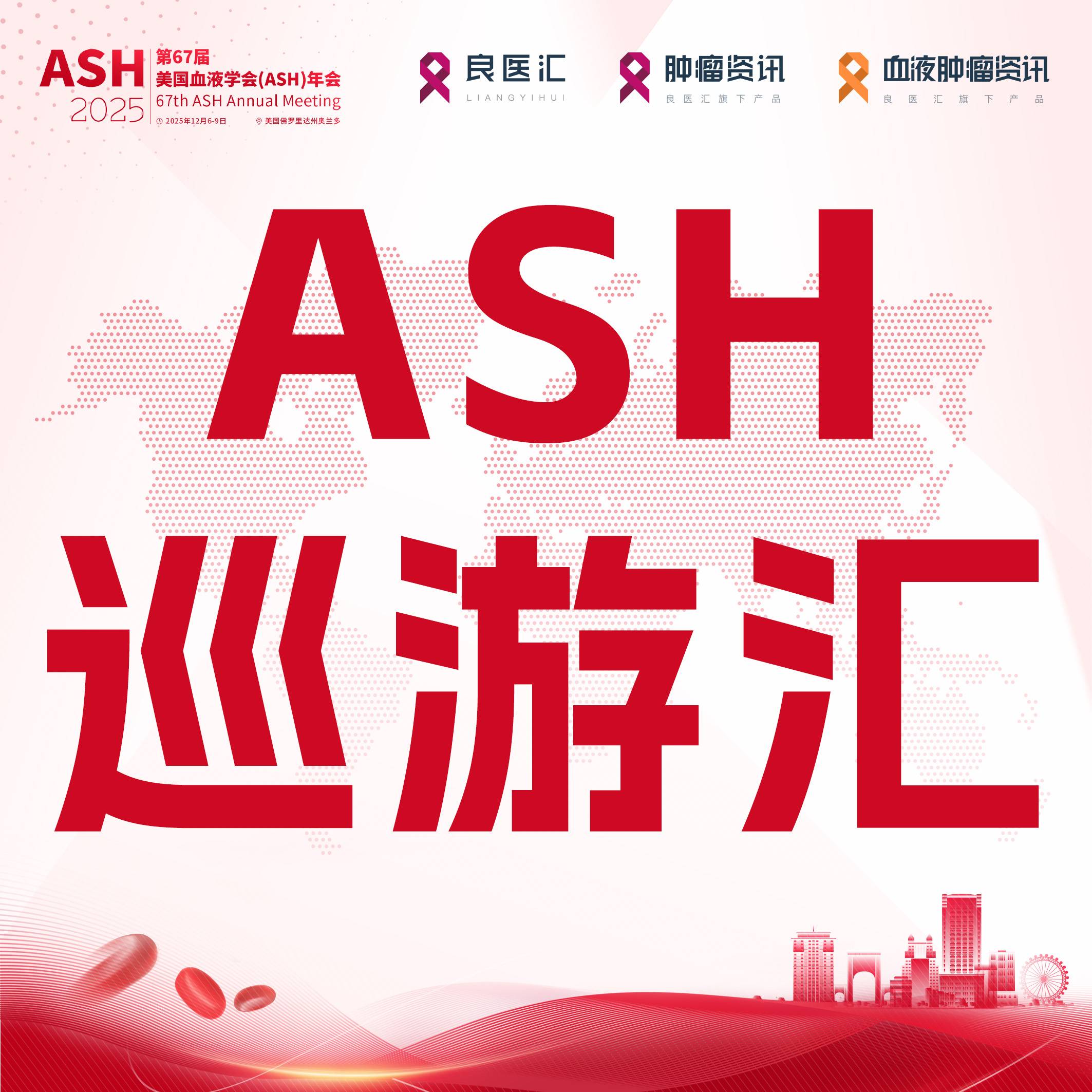一、伴肝转移胰腺癌概况
肝脏独特的解剖位置、肝窦开孔型内皮和免疫抑制环境使其他部位的肿瘤容易转移至肝脏,即肝转移癌(瘤),也称继发性肝癌或转移性肝癌[1]。转移性肝癌的发生率是原发性肝脏恶性肿瘤的18-40倍[2],肝转移的发生与5年生存率的下降和生活质量的降低显著相关[3]。
肝脏是消化道肿瘤最常见的转移部位,高达80%的转移性胰腺癌患者最终会发生肝转移[4]。不同转移部位胰腺癌患者的生存时间存在显著差异,与孤立性肺/淋巴结/腹膜转移相比,孤立性肝转移的中位生存时间更短(图1)[5]。

伴肝转移结直肠癌(CRLM)和伴肝转移神经内分泌肿瘤(NELM)是公认的肝切除术适应症,而对于非结直肠非神经内分泌肝转移瘤,主要采用全身系统治疗[4]。但存在肝转移时,可以特异性诱导全身调节性T(Treg)细胞活性增强,使Tregs细胞中免疫抑制相关基因表达上调,从而抑制抗肿瘤免疫[6]。临床数据表明,存在肝转移的患者anti-PD-1抗体治疗的效果比没有肝转移的病人差[7, 8]。临床上,伴肝转移实体瘤(包括胰腺癌)始终缺乏有效的治疗手段。
伴肝转移胰腺癌的疗效和预后较差,可能与胰腺癌肝转移病灶的微环境有关:
(1)胰腺肿瘤血管密度低[9],肝转移肿瘤血供丰富且伴随血管新生/血管劫持,从而促进肿瘤发展和转移[4, 10]。
(2)肝转移灶具有与胰腺原发灶相似的结缔组织增生特征,在胰腺原发肿瘤和转移灶中都发现高水平的胶原和透明质酸,表现出细胞外基质(ECM)硬化[11],这可能是化疗耐药的原因,胰腺癌患者的生存率与ECM硬化之间存在显著的负相关[12]。
(3)肝转移病灶中多种细胞间相互作用形成免疫抑制型微环境。研究发现肝转移病灶中抑制型Treg细胞含量显著增多,免疫激活型CD8+ T细胞含量显著减少[13]。在胰腺癌小鼠模型和配对人类样本的小队列中,肝转移显示出比肺转移更少的免疫细胞浸润[14]。与此同时,临床数据表明70%-80%的胰腺癌患者无法从免疫治疗中获益[15-18]。
基于以上的微环境特点,抗血管生成药物及其联合治疗是肝转移治疗的方向之一。虽然无论是否联合化疗,靶向VEGF的贝伐珠单抗治疗晚期胰腺癌未显示出临床获益[19, 20],但近期的一些临床试验结果表明,多靶点酪氨酸激酶抑制剂治疗转移性胰腺癌(尤其是肝转移患者)具有初步疗效。在一项一线治疗转移性胰腺癌的研究中,NASCA(索凡替尼+卡瑞利珠单抗+白紫+S-1)治疗组肝转移患者ORR显著高于不伴肝转移患者(90% vs 20%,p=0.0017)[21]。
二、安罗替尼治疗伴肝转移胰腺癌的机制基础
安罗替尼可以调控肿瘤微环境重编程(图2),对血管基质重编程、肿瘤细胞重编程和肿瘤免疫微环境重编程都具有调控作用,因此,安罗替尼治疗实体瘤可达到“单药有效,联合增效”的抗肿瘤效果。
针对肝转移病灶特殊的微环境,安罗替尼可以从以下几个方面调控肿瘤微环境治疗肝转移:
(1)安罗替尼可以通过阻断VEGFR/PDGFR/FGFR/c-kit通路,全面抑制肿瘤血管新生[22-25],抑制肝转移的发生与发展;
(2)安罗替尼可改善细胞外基质硬化,降低间质液压以及实体压力,从而促进药物的递送与分布:在NSCLC小鼠肿瘤模型中,安罗替尼显著减少ECM的重要组成部分I型胶原的合成,在其他小鼠肿瘤模型中,安罗替尼显著降低肿瘤组织的间质液压以及实体压力[26];
(3)安罗替尼可以调控肿瘤免疫微环境重编程,增强免疫细胞浸润,提高抗肿瘤/促肿瘤免疫细胞比例和细胞因子水平,联合免疫实现协同增效[27-29]。
 图2. 安罗替尼调控“肿瘤微环境重编程”
图2. 安罗替尼调控“肿瘤微环境重编程”
三、安罗替尼治疗伴肝转移胰腺癌的临床进展
1、盐酸安罗替尼胶囊联合化疗在消化道肿瘤肝转移灶中应用的多队列、多中心、探索性临床研究(ALTER-G-001研究)
ALTER-G-001研究为单臂、多队列、多中心II期研究,纳入未经系统治疗的、伴不可切除肝转移灶的晚期结直肠癌、食管鳞癌、其他消化道肿瘤患者,分为3个队列,队列A:伴肝转移结直肠癌,队列B:伴肝转移食管鳞癌,队列C:伴肝转移的其他消化道肿瘤,包括胃癌、胰腺癌和胆道癌等。其中队列C前6周期初始治疗期,受试者接受安罗替尼(12 mg,p.o.,qd,d1-14)联合标准化疗,21天作为一个周期;6周期后,疗效评估为CR/PR/SD的患者接受安罗替尼(12 mg,p.o.,qd,d1-14)和卡培他滨节拍化疗(500 mg,po,bid,d1-21)维持治疗,21天作为一个周期,直至疾病进展或不可耐受。
2024年ASCO GI报道了队列C的疗效和安全性数据[30]。截至2023年9月14日,队列C纳入41例非结直肠肿瘤和非食管鳞癌的其他消化道肿瘤肝转移患者,包括29例胰腺癌,5例胆道癌,6例胃癌以及1例十二指肠癌。大多数胰腺癌患者接受了安罗替尼联合吉西他滨和白紫化疗作为诱导治疗方案。诱导治疗后,4例患者接受手术(1例胰腺癌,2例胃癌,1例胆道癌)。37例患者疗效可评估,ORR达到45.9%,DCR为86.5%(17例PR,15例SD,其中12例SD患者肿瘤减小)(图3)。25例胰腺癌患者疗效可评估,ORR为48%,DCR为88%;中位DoR为4.2(95%CI,2.0-6.3)个月,中位PFS为5.5(95%CI,4.7-6.3)个月(图4)。所有级别TEAE发生率90.2%(37/41),≥3级TEAE发生率51.2%,主要包括中性粒细胞计数降低(19.5%)、白细胞计数降低(12.2%)和血小板减少(9.8%),安全性可控。
 图3. 队列C(n=37)的治疗持续时间和靶病灶最佳缓解瀑布图
图3. 队列C(n=37)的治疗持续时间和靶病灶最佳缓解瀑布图
 图4. 胰腺癌患者PFS的Kaplan-Meier曲线
图4. 胰腺癌患者PFS的Kaplan-Meier曲线
2、替吉奥(S-1)联合信迪利单抗和安罗替尼二线治疗胰腺癌肝转移患者的有效性和安全性的单臂、II期临床试验
本研究为单中心、开放性、Ⅱ期临床研究。研究对象为组织学或细胞学确诊的胰腺癌肝转移患者,需影像学提示肝内有可测量病灶,一线接受过吉西他滨治疗,且一线治疗未使用氟尿嘧啶类、免疫检查点抑制剂、抗血管生成靶向药物。治疗方案为替吉奥(25mg/m2,P.O,bid,D1-14)联合信迪利单抗(200 mg,I.V,D1)和安罗替尼(12 mg,P.O,QD,D1-14),每21天为1周期。
从2020年3月至2021年6月,研究共入组23例患者,其中19例患者疗效可评估,2例患者(10.5%)达到PR,8例患者(42.1%)达到SD,ORR为10.5%(95%CI,0.4%-25.7%)(图5)。中位PFS和OS分别为3.53(95%CI:2.50-7.50)个月和8.53(95%CI,4.97-14.20)个月(图6)。在安全性方面,研究中大多数不良事件为1-2级。最常见的血液学毒性包括白细胞减少(47.8%)和血小板减少(47.8%)。最常见的非血液学毒性为疲乏(30.0%)和恶心/呕吐(21.7%)。最常见的免疫治疗相关不良事件为甲状腺功能减退(13.0%)和甲状腺功能亢进(13.0%)。26.1%的患者发生3级不良事件,未观察到4级或4级以上不良事件或治疗相关死亡[31]。
 图5. 19例胰腺癌患者的靶病灶最佳缓解瀑布图和治疗持续时间
图5. 19例胰腺癌患者的靶病灶最佳缓解瀑布图和治疗持续时间
 图6. 19例胰腺癌患者OS的Kaplan-Meier曲线
图6. 19例胰腺癌患者OS的Kaplan-Meier曲线
3、安罗替尼治疗消化道肿瘤伴肝转移的真实世界研究
这项研究收集了2016年1月1日到2023年2月28日期间,包括中山大学肿瘤防治中心、郑州大学第一附属医院、山东省肿瘤医院等5家大型医院就诊的实体瘤伴肝转移且接受安罗替尼治疗的患者。其中有238例伴肝转移消化道肿瘤患者,包括73例胃癌、71例结直肠癌、46例食管癌、24例胆道癌及24例胰腺癌,75.2%的患者在75岁以下,63.9%的患者BMI正常,87.8%的患者接受安罗替尼三线治疗,90.3%的患者接受安罗替尼单药治疗[32]。
结果显示,安罗替尼治疗消化道肿瘤伴肝转移的中位PFS达5.9个月(图7),针对肝转移病灶的中位PFS达6.2个月(图8),中位OS则为9.4个月(图9)。其中,安罗替尼治疗胰腺癌伴肝转移的中位PFS达6.6个月,针对肝转移病灶的中位PFS达6.37个月。各癌种间的PFS、肝转移病灶PFS和OS均无统计学差异,提示各部位来源的消化道肿瘤一旦发生肝转移,均能从安罗替尼治疗中获益。进一步分析发现,BMI低于18.5,即体重过轻患者的PFS和肝转移病灶PFS均显著降低,在临床中需重点关注这部分患者。
 图7. 消化道肿瘤伴肝转移患者的中位无进展生存期
图7. 消化道肿瘤伴肝转移患者的中位无进展生存期
 图8. 肝转移病灶的中位无进展生存期
图8. 肝转移病灶的中位无进展生存期
 图9. 消化道肿瘤伴肝转移患者的中位生存期
图9. 消化道肿瘤伴肝转移患者的中位生存期
总结
胰腺癌恶性程度高,伴肝转移患者的疗效和预后尤其较差,对全身性治疗如化疗、放疗、免疫治疗等的敏感度不高,缺乏有效的治疗手段。由于肝转移病灶的微环境特点,抗血管生成药物及其联合治疗是肝转移治疗的方向之一。上述多项研究显示安罗替尼单药或联合方案在伴肝转移胰腺癌领域具有初步的抗肿瘤疗效,且不良反应可控。相信未来会有更多针对多靶点酪氨酸激酶抑制剂治疗转移性胰腺癌的前瞻性临床试验开展,为伴肝转移胰腺癌的治疗提供更多循证医学证据。
[1] Steeg PS. Tumor metastasis: mechanistic insights and clinical challenges. Nat Med. 2006. 12(8): 895-904.
[2] Milette S, Sicklick JK, Lowy AM, Brodt P. Molecular Pathways: Targeting the Microenvironment of Liver Metastases. Clin Cancer Res. 2017. 23(21): 6390-6399.
[3] Siegel RL, Miller KD, Jemal A. Cancer statistics, 2020. CA Cancer J Clin. 2020. 70(1): 7-30.
[4] Tsilimigras DI, Brodt P, Clavien PA, et al. Liver metastases. Nat Rev Dis Primers. 2021. 7(1): 27.
[5] Liu KH, Hung CY, Hsueh SW, et al. Lung Metastases in Patients with Stage IV Pancreatic Cancer: Prevalence, Risk Factors, and Survival Impact. J Clin Med. 2019. 8(9): 1402.
[6] Lee JC, Mehdizadeh S, Smith J, et al. Regulatory T cell control of systemic immunity and immunotherapy response in liver metastasis. Sci Immunol. 2020. 5(52): eaba0759.
[7] Bilen MA, Shabto JM, Martini DJ, et al. Sites of metastasis and association with clinical outcome in advanced stage cancer patients treated with immunotherapy. BMC Cancer. 2019. 19(1): 857.
[8] Yu J, Green MD, Li S, et al. Liver metastasis restrains immunotherapy efficacy via macrophage-mediated T cell elimination. Nat Med. 2021. 27(1): 152-164.
[9] van der Zee JA, van Eijck CH, Hop WC, et al. Angiogenesis: a prognostic determinant in pancreatic cancer. Eur J Cancer. 2011. 47(17): 2576-84.
[10] Frentzas S, Simoneau E, Bridgeman VL, et al. Vessel co-option mediates resistance to anti-angiogenic therapy in liver metastases. Nat Med. 2016. 22(11): 1294-1302.
[11] Li X, Shepard HM, Cowell JA, et al. Parallel Accumulation of Tumor Hyaluronan, Collagen, and Other Drivers of Tumor Progression. Clin Cancer Res. 2018. 24(19): 4798-4807.
[12] Whatcott CJ, Diep CH, Jiang P, et al. Desmoplasia in Primary Tumors and Metastatic Lesions of Pancreatic Cancer. Clin Cancer Res. 2015. 21(15): 3561-8.
[13] Ru Jia HS, Zhi-Kuan Wang GD, Nan Zhang FL, et al. Updated results of a phase 1b/2 study of surufatinib plus camrelizumab, nab-paclitaxel and S-1 (NASCA) as first-line therapy for metastatic pancreatic adenocarcinoma (mPDAC). JOURNAL OF CLINICAL ONCOLOGY. 2024. 42(3): suppl, 671-671.
[14] Ho WJ, Erbe R, Danilova L, et al. Multi-omic profiling of lung and liver tumor microenvironments of metastatic pancreatic cancer reveals site-specific immune regulatory pathways. Genome Biol. 2021. 22(1): 154.
[15] O'Reilly EM, Oh DY, Dhani N, et al. Durvalumab With or Without Tremelimumab for Patients With Metastatic Pancreatic Ductal Adenocarcinoma: A Phase 2 Randomized Clinical Trial. JAMA Oncol. 2019. 5(10): 1431-1438.
[16] Aglietta M, Barone C, Sawyer MB, et al. A phase I dose escalation trial of tremelimumab (CP-675,206) in combination with gemcitabine in chemotherapy-naive patients with metastatic pancreatic cancer. Ann Oncol. 2014. 25(9): 1750-1755.
[17] Wainberg ZA, Hochster HS, Kim EJ, et al. Open-label, Phase I Study of Nivolumab Combined with nab-Paclitaxel Plus Gemcitabine in Advanced Pancreatic Cancer. Clin Cancer Res. 2020. 26(18): 4814-4822.
[18] Weiss GJ, Blaydorn L, Beck J, et al. Phase Ib/II study of gemcitabine, nab-paclitaxel, and pembrolizumab in metastatic pancreatic adenocarcinoma. Invest New Drugs. 2018. 36(1): 96-102.
[19] Kindler HL, Niedzwiecki D, Hollis D, et al. Gemcitabine plus bevacizumab compared with gemcitabine plus placebo in patients with advanced pancreatic cancer: phase III trial of the Cancer and Leukemia Group B (CALGB 80303). J Clin Oncol. 2010. 28(22): 3617-22.
[20] Astsaturov IA, Meropol NJ, Alpaugh RK, et al. Phase II and coagulation cascade biomarker study of bevacizumab with or without docetaxel in patients with previously treated metastatic pancreatic adenocarcinoma. Am J Clin Oncol. 2011. 34(1): 70-5.
[21] Dai G, Jia R, Si H, et al. A phase 1b/2 study of surufatinib plus camrelizumab, nab-paclitaxel, and S-1 (NASCA) as first-line therapy for metastatic pancreatic adenocarcinoma (mPDAC). Journal of Clinical OncologyJournal of Clinical OncologyJCO. 2023. 41(16_suppl): 4142-4142.
[22] Xie C, Wan X, Quan H, et al. Preclinical characterization of anlotinib, a highly potent and selective vascular endothelial growth factor receptor-2 inhibitor. Cancer Sci. 2018. 109(4): 1207-1219.
[23] Lin B, Song X, Yang D, Bai D, Yao Y, Lu N. Anlotinib inhibits angiogenesis via suppressing the activation of VEGFR2, PDGFRβ and FGFR1. Gene. 2018. 654: 77-86.
[24] Wilhelm SM, Carter C, Tang L, et al. BAY 43-9006 exhibits broad spectrum oral antitumor activity and targets the RAF/MEK/ERK pathway and receptor tyrosine kinases involved in tumor progression and angiogenesis. Cancer Res. 2004. 64(19): 7099-109.
[25] Sun Q, Zhou J, Zhang Z, et al. Discovery of fruquintinib, a potent and highly selective small molecule inhibitor of VEGFR 1, 2, 3 tyrosine kinases for cancer therapy. Cancer Biol Ther. 2014. 15(12): 1635-45.
[26] 即将在2024年CCTB大会(中国肿瘤标志物学术大会)中公布.
[27] Liu S, Qin T, Liu Z, et al. anlotinib alters tumor immune microenvironment by downregulating PD-L1 expression on vascular endothelial cells. Cell Death Dis. 2020. 11(5): 309.
[28] Li J, Cao P, Chen Y, et al. Anlotinib combined with the PD-L1 blockade exerts the potent anti-tumor immunity in renal cancer treatment. Exp Cell Res. 2022. 417(1): 113197.
[29] Yuan M, Zhai Y, Men Y, et al. Anlotinib Enhances the Antitumor Activity of High-Dose Irradiation Combined with Anti-PD-L1 by Potentiating the Tumor Immune Microenvironment in Murine Lung Cancer. Oxid Med Cell Longev. 2022. 2022: 5479491.
[30] Wu J, Zhou C, Yan J, et al. Anlotinib plus chemotherapy as first-line therapy for patients with gastrointestinal tumor with unresectable liver metastasis: Updated results from a multi-cohort, multi-center phase II trial ALTER-G-001-cohort C. JOURNAL OF CLINICAL ONCOLOGY. 2024. 42(3_suppl): 653-653.
[31] Qiu X, Lu C, Sha H, et al. Efficacy and safety of second-line therapy by S-1 combined with sintilimab and anlotinib in pancreatic cancer patients with liver metastasis: a single-arm, phase II clinical trial. Front Immunol. 2024. 15: 1210859.
[32] Zhu Y, Zhuo M, Xu X, Qin Y, Wang Z. Real-world data of anlotinib for gastrointestinal tumors with liver metastases in China. Journal of Clinical OncologyJournal of Clinical OncologyJCO. 2024. 42(3_suppl): 738-738.
排版编辑:肿瘤资讯-PP











 苏公网安备32059002004080号
苏公网安备32059002004080号


